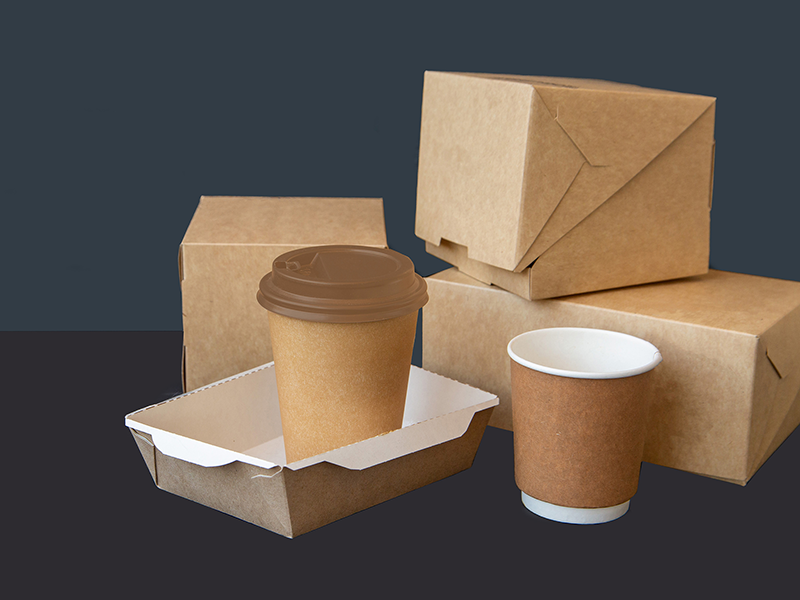Single-use plastics legislation and the PPWR will help reshape Europe’s consumption of food and beverage packaging over the next five years, according to the latest detailed market survey from Smithers.
Examining 21 packaging formats in 13 European countries shows combined consumption will reach 819.6 billion food and drink packs in 2023, according to data modelling for the new Smithers report –
The Future of European Food & Drink Packaging to 2028.
High levels of market saturation in Western Europe, and consumer demand weakened, for now, by inflation; means there will be only modest increases across 2023-2028. Smithers forecasts consumption of such packaging will rise at 1.65% year-on-year to reach 889.4 billion units in 2028.
Across the same 2023-2028 period, the weight of packaged food and beverages sold in these markets will continue to grow. Up from 596.1 million tons in 2018, it is projected to reach 619.9 million tons in 2023; and will increase further to 645.6 million tons in 2028.
Within the Smithers target markets, consumption of foodservice formats is also set to increase, but only moderately, rising from 229.4 billion packaging elements in 2023, to 269.4 billion in 2028. This segment has been disrupted most directly by the EU’s Single-use Plastics Directive, leading to the replacement of several plastic formats with alternative fiber-based materials.
Food and drinks account for 75% of all consumer packaging demand in Europe. And so will be of principal interest as Europe’s recycling sector adapts to tough new recovery targets set to be introduced by the reformed Packaging and Packaging Waste Regulation (PPWR) – potentially as early as 2025. These rules will drive industry towards more recyclable formats, such as metal cans or paperboard trays.
Simultaneously, there will be greater use of recycled plastics in beverage bottles, especially for PET, as the EU mandates minimum levels of post-consumer recycled resins – initially set at 25% from 2025. This will stress supplies of food-contact compliant PCR materials in the short term. For other plastics there is more interest in easier-to-recycle flexible polymer formats for food, including stand-up and form-fill-seal pouches.
The drift towards greater sustainability will be balanced by the need to reduce food waste in supply chains, as well as reacting to new healthy eating and allergen safety protocols.
Commercially food and beverage brands are diversifying the number of stock-keeping units they produce, providing more variety for consumers, and focusing on healthier, natural ingredients. The home delivery and e-commerce grocery segments are continuing their post-Covid growth trajectories, demanding new bespoke premium packaging solutions.
The period to 2028 will also see the wider deployment of re-use/refill concepts in food and beverage packaging, both for retail and foodservice, although France’s new laws requiring re-use containers for everyone eating in quick-service restaurants will remain an outlier.
The Future of European Food & Drink Packaging to 2028 provides a detailed examination of the evolving demand in this core sector for Europe’s packaging industry and FMCG brands at a time of profound change. Its exclusive dataset (over 400 data tables & figures) segments the market by:
- Sales channel: (Retail, Foodservice)
- Pack format: (Glass bottles & jars; Rigid plastic bottles; Liquid cartons <50ml; Liquid cartons ≥0.5l; Metal cans; Shrink & stretch sleeve labels; Rigid plastic tubs, pots, jiggers, PCs, <50ml; Rigid plastic tubs, pots, jiggers, PCs, ≥50ml; Dispensing pouches – Bag-in-box; Dispensing pouches – other; Stand-up pouches; Bags, pouches, sachets inc. FFS <50ml; Bags, pouches, sachets inc. FFS ≥50ml; Plastic tubes; Foil trays; Rigid plastic trays; Paperboard trays; Lidding films; Wrapping films; Rigid plastic lids; Paperboard lids; Folding cartons)
- End-use applications: (Fresh meat, poultry & fish; Fresh fruit & vegetables; Frozen foods; Ready meals; Chilled foods; Dried foods; Baked products; Savory snacks; Dairy products; Confectionery; Canned and preserved foods; Sauces, pickles, oils & fats, salt & pepper; Baby foods; Pet foods; Hot beverages; Carbonated soft drinks; Packaged water; Juices & juice drinks/nectars; Sports/energy drinks & dilutables; Beer & cider; Wine; Spirits & FABs)
- National/regional market: (Belgium, France, Germany, Italy, The Netherlands, Poland, Russia, Scandinavia, Spain, UK).
